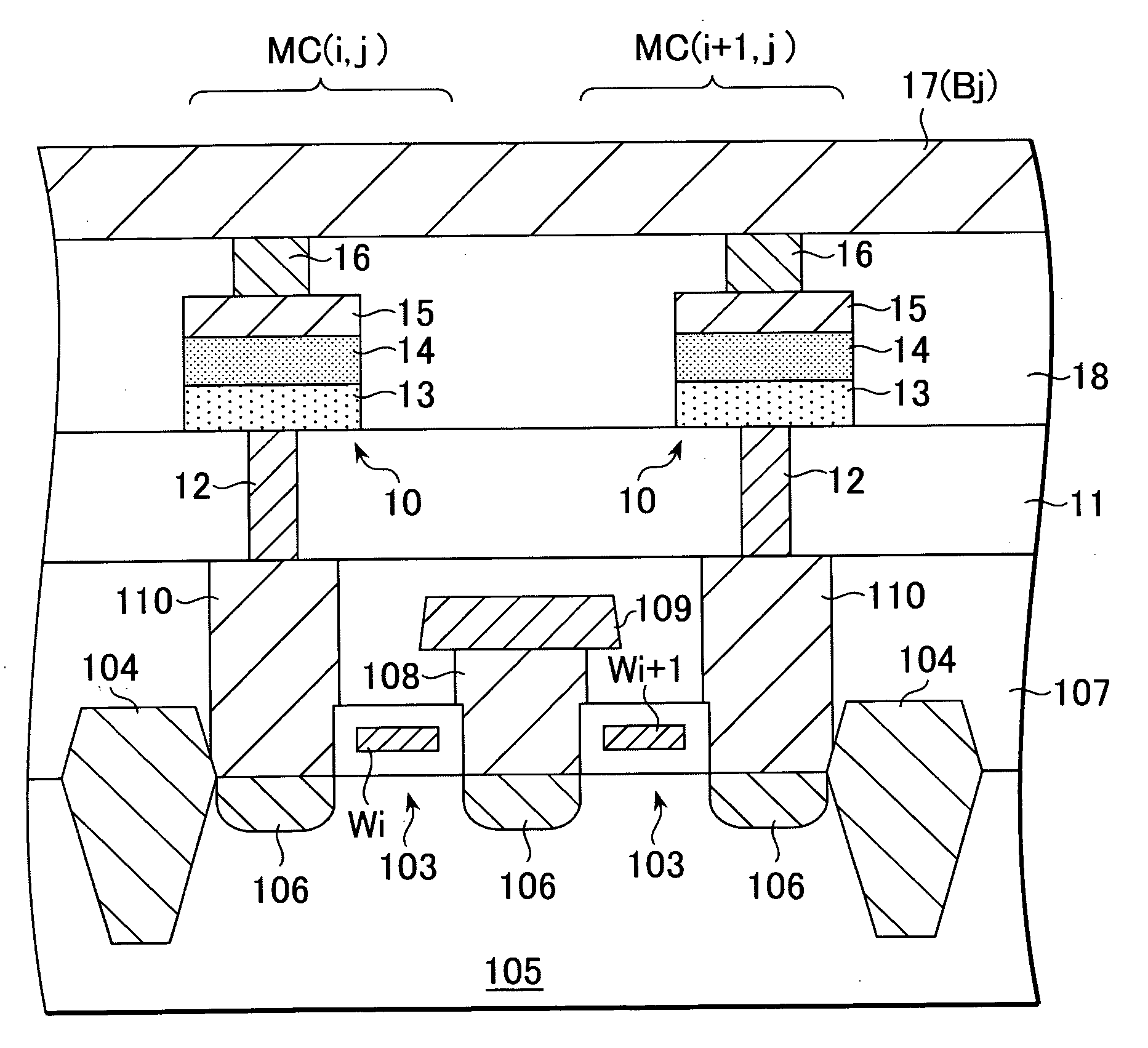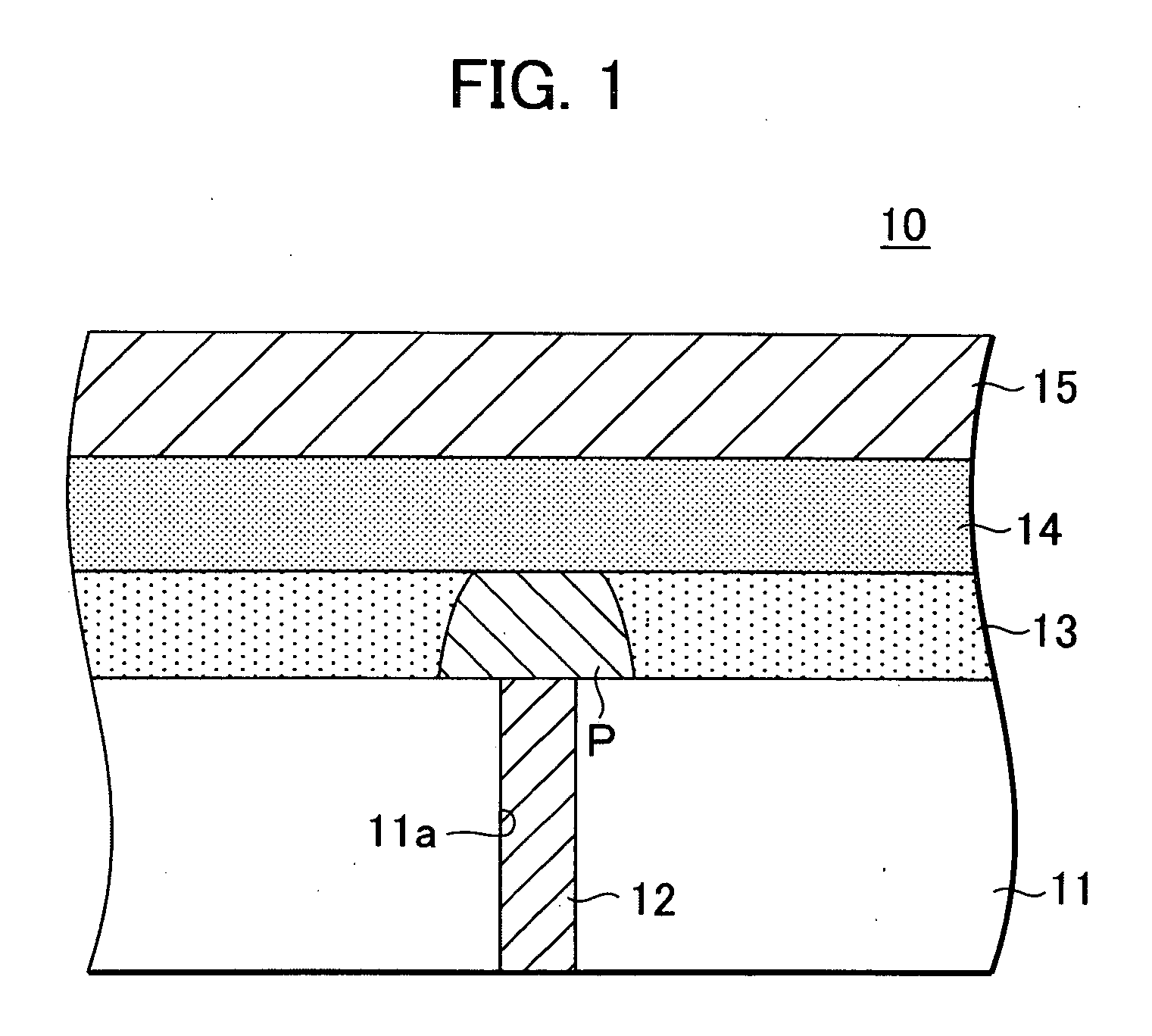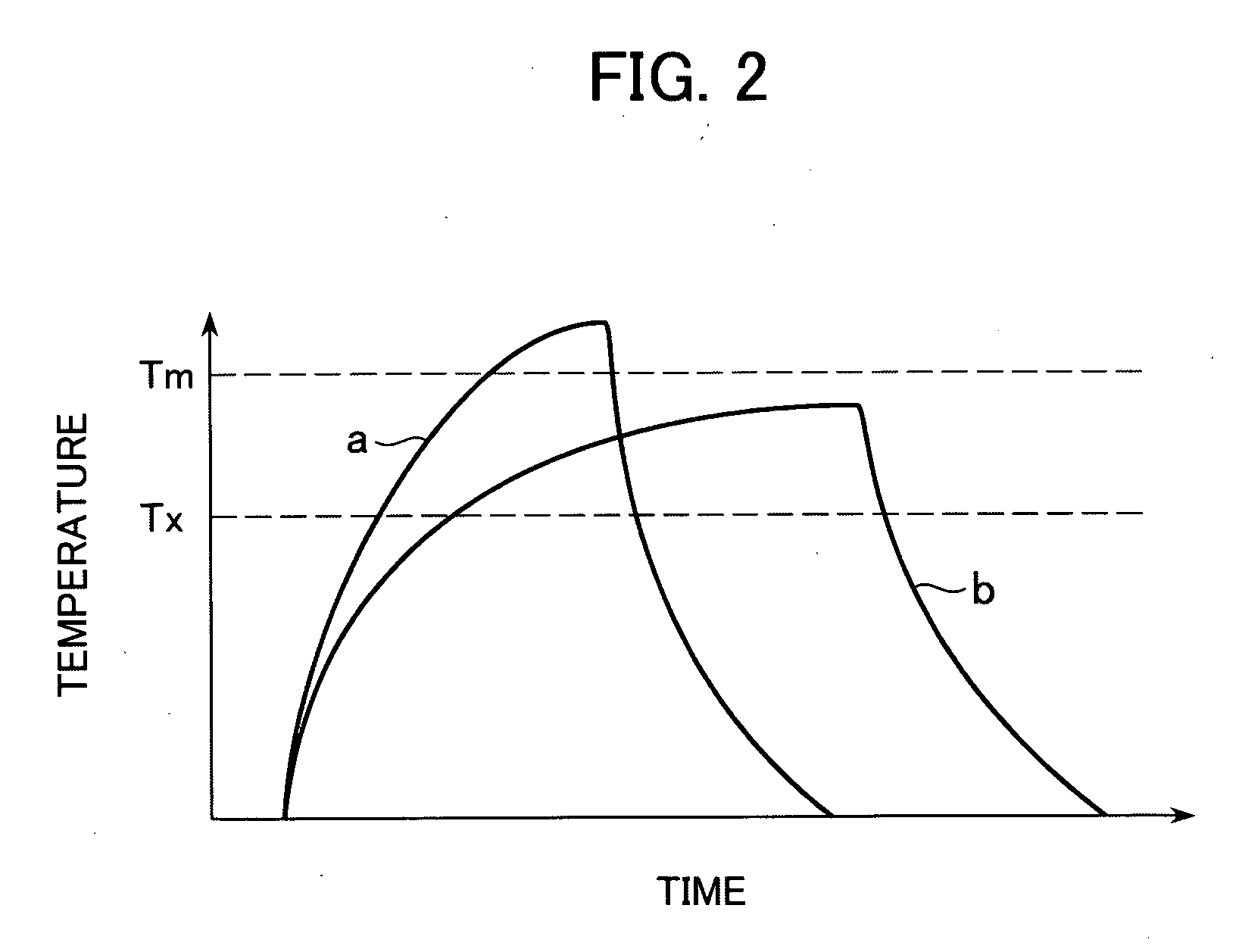Electrically rewritable non-volatile memory element and method of manufacturing the same
a non-volatile memory element, electric rewritability technology, applied in the direction of digital storage, instruments, semiconductor devices, etc., can solve the problems of reducing the electrical power consumption of the device, dram is volatile memory that loses stored data, and the limit of the device electrical power consumption can be reduced, so as to improve the heating efficiency and reduce the write current. , the effect of high heating efficiency
- Summary
- Abstract
- Description
- Claims
- Application Information
AI Technical Summary
Benefits of technology
Problems solved by technology
Method used
Image
Examples
first embodiment
[0037]FIG. 1 is a cross-sectional view of the memory element according to the present invention.
[0038] As shown in FIG. 1, the non-volatile memory element 10 according to this embodiment includes an interlayer isolation layer 11, a bottom electrode 12 buried within the interlayer isolation layer 11, and a recording layer 13, block layer 14 and top electrode 15 formed, in that order, on the interlayer isolation layer 11. In this embodiment, the top electrode 15 is also used as a bit line.
[0039] The interlayer isolation layer 11 can be formed of silicon oxide or silicon nitride or the like. The bottom electrode 12 is formed in a through-hole 11a formed in the interlayer isolation layer 11.
[0040] The bottom electrode 12 is used as a heater plug. That is, it constitutes part of the heater during data writes. For this, the bottom electrode 12 is preferably formed of a material having a relatively high electrical resistance, such as metal silicides, metal nitrides and nitrides of metal ...
second embodiment
[0080] Next, a non-volatile memory element 20 according to the present invention is described.
[0081]FIG. 10 is a drawing showing the cross-section of the memory element 20 according to the second embodiment of the present invention.
[0082] As shown in FIG. 10, the memory element 20 differs from the memory element 10 in having an intermediate layer 21 between the recording layer 13 and the block layer 14. Other parts and elements are the same and are denoted by the same reference numerals, so repeated explanation thereof is omitted.
[0083] The intermediate layer 21 serves to prevent intermixing between the recording layer 13 and the block layer 14. There is no particular limitation on the material of the intermediate layer 21, as long as it can prevent the recording layer 13 and block layer 14 from intermixing. However, it is preferable to choose a material having a higher electrical resistance than the recording layer 13. If the electrical resistance of the intermediate layer 21 is ...
PUM
 Login to View More
Login to View More Abstract
Description
Claims
Application Information
 Login to View More
Login to View More - R&D
- Intellectual Property
- Life Sciences
- Materials
- Tech Scout
- Unparalleled Data Quality
- Higher Quality Content
- 60% Fewer Hallucinations
Browse by: Latest US Patents, China's latest patents, Technical Efficacy Thesaurus, Application Domain, Technology Topic, Popular Technical Reports.
© 2025 PatSnap. All rights reserved.Legal|Privacy policy|Modern Slavery Act Transparency Statement|Sitemap|About US| Contact US: help@patsnap.com



